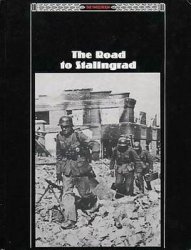The Celts suddenly gave form and definition to what had until then still been rather vague notions about the peoples of prehistoric Europe. The mysterious beliefs and practices of the Druids exercised a particular fascination. John Aubrey had proposed that the megalithic circles at Stonehenge and Avebury, now known to be Neolithic in date, were Druidical temples. These ideas were taken up and popularised in England by William Stukeley and in France by Malo de la Tour-d’Auvergne and Jacques Cambry. By the end of the eighteenth century the association between Druids and megaliths was firmly established in the popular imagination: despite the best efforts of archaeologists, it has still not been entirely dislodged. There was indeed something about the Celts that later eighteenth-century Europeans simply found irresistible, and they went down with a bad case of what came to be known as ‘Celtomania’. Though Celtomania burned itself out before the middle of the nineteenth century, the Celts themselves have loomed large in the European historical imagination ever since.
Celtomania was a manifestation of the Romantic movement, a cultural rebellion against the rationalism and materialism of the Enlightenment. Romanticism exalted imagination, irrationalism, individualism and rebellion, and love of wild nature, the mysterious and the exotic. The aesthetic sensibilities of Europeans were radically altered as a result, leaving no aspect of the arts unaffected. These aesthetic changes had a great impact on attitudes to the Celts. Everything that was then known about the ancient Celts came from the works of hostile Classical Greek and Roman writers, who had regarded them as dangerous barbarians. These writers constructed what in their eyes was an unflattering stereotype of the Celts as violent, proud, undisciplined and superstitious barbarians. Treated uncritically, this originally hostile and inaccurate stereotype seemed to embody to the Romantics everything that their movement stood for. The Celts were transformed from dangerous savages into noble savages, unspoiled by decadent civilisation. Although almost nothing was known about their beliefs, the Druids became examples of spirituality to be emulated by intellectuals who were disillusioned by the impersonal nature of organised religion and repelled by the ugliness created by the industrial revolution. Druids began to appear in poetry, paintings and even operas. Landowners, like William Danby of Swinton Hall in Yorkshire, adorned their estates with megalithic Druidic temples and oak groves. Beginning with the foundation of the Order of Bards, Ovates and Druids in London in 1717, several attempts were made to revive Druidism. Imagination made up for the dearth of knowledge, and the neo-Druids decked themselves out in fanciful costumes and invented solemn rituals, such as the Maen Gorsedd bardic ceremony, which was first performed in 1792. This famous ritual was the invention of Edward Williams (better known by his assumed bardic name of lolo Morgannwg), who even forged documents to prove its authentic antiquity; it has become part of the ceremonies of the National Eisteddfod. Fortunately, there was no attempt to revive the profoundly unromantic (but authentic) Druidic practices of animal and human sacrifice.
One of the first and most influential works of the period of Celtomania was the Ossianic poems ofjames Macpherson (1736-96). Macpherson was born at Ruthven near Inverness and grew up with a good knowledge of both Gaelic language and poetry. In 1760 he published Fragments of Ancient Poetry, which he later claimed were translations from ancient manuscripts of epic poems by the semi-legendary Gaelic bard Ossian, who perhaps lived in the early Christian period. The book was a bestseller and two more volumes of Ossianic poems, Fingal (1762) and Femora (1763), soon followed. Partly due to residual prejudice against the Gaels (how could such a primitive people have a tradition of epic poetry?), many in the literary establishment were openly sceptical about the authenticity of the poems. Macpherson’s failure, when challenged, to show his manuscripts to the public, seemed to justify these doubts. The truth is, as Dr Johnson surmised at the time, that Macpherson had taken names, stories, phrases and passages from old Gaelic songs and blended them into a composition that was largely of his own invention. The controversy over the poems’ authenticity did not affect their popularity and they inspired romantics, nationalists, revolutionaries, poets and artists across Europe. Macpherson’s admirers included Goethe, Napoleon, Wordsworth, Walter Scott and Mendelssohn. Macpherson’s poems are little read today and their lasting value is that they stimulated interest in collecting and preserving genuine Celtic literature and oral traditions at a time when far-reaching social and economic changes threatened their survival. Among the more important of these works were Poetry of the Ancient Welsh Bards by Evan Evans (1764), the Gaelic folklore collections of John Francis Campbell of Islay (1860-2), and Barzaz-Breiz (‘Songs of Brittany’) by Vicomte Hersart de la Villemarque (1838).




 World History
World History









